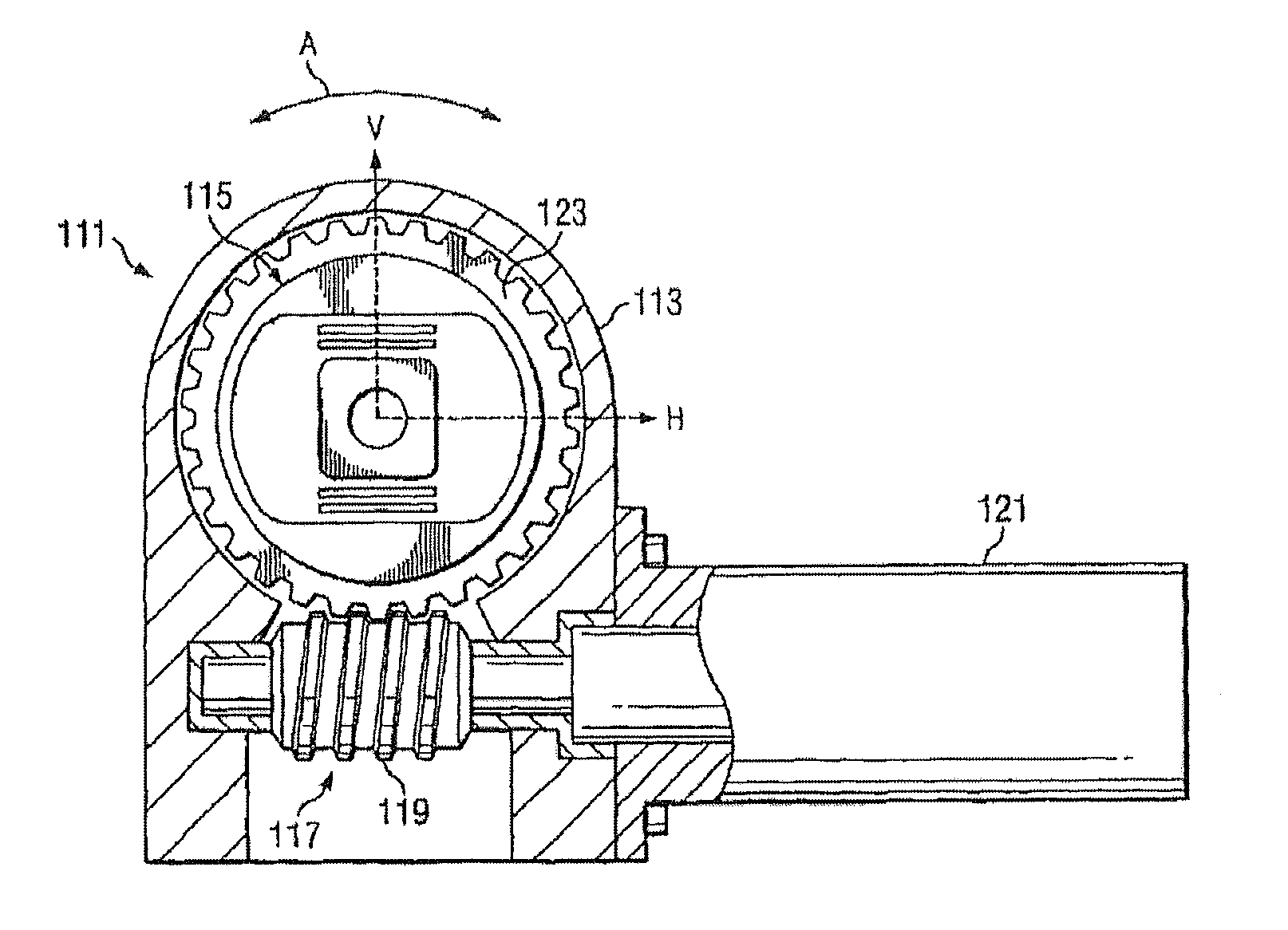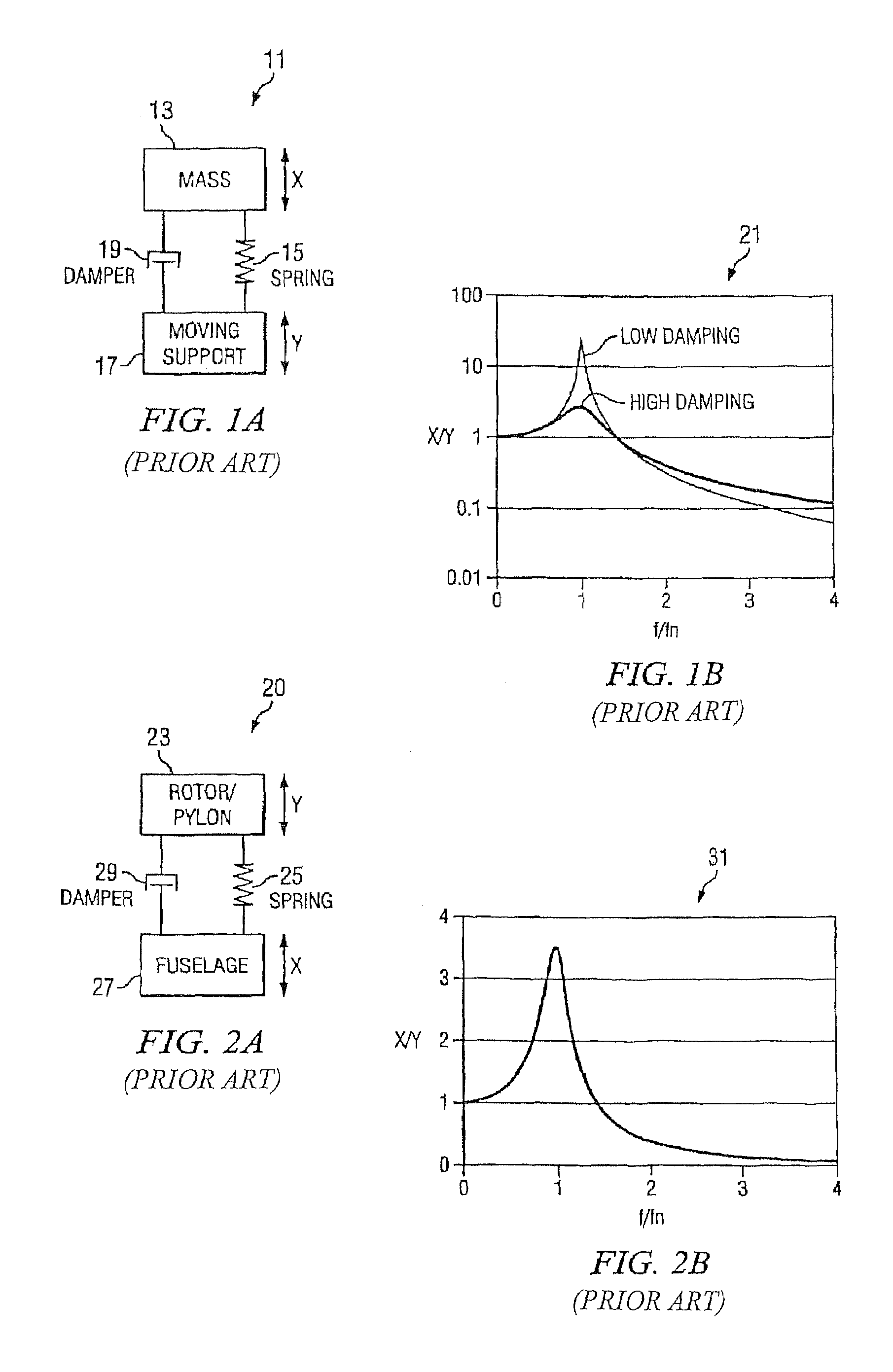Variable stiffness support
a support and variable technology, applied in the direction of spring/damper functional characteristics, gearing, hoisting equipment, etc., can solve the problems of system failure, improper function, and reduced life, and achieve the effect of less wear and vibration
- Summary
- Abstract
- Description
- Claims
- Application Information
AI Technical Summary
Benefits of technology
Problems solved by technology
Method used
Image
Examples
Embodiment Construction
[0031]Referring now to FIGS. 4 and 5 in the drawings, a variable stiffness support 111 according to the present invention is illustrated. Variable stiffness support 111 provides for avoiding resonance by controlling the natural frequency of a system by adjusting the stiffness of the system. Variable stiffness support 111 functions as a variable stiffness spring. Variable stiffness support 111 is configured in such a way as to provide a different stiffness dependent upon the orientation of the elastomer assembly with respect to the direction of an applied load or deflection. When applied to dynamic systems, the present invention provides a simple means for changing the system natural frequencies and responses to applied harmonic forces. This allows selective “tuning” of a system away from resonant conditions, where vibrations and forces are high and potentially destructive. As such, variable stiffness support 111 is particularly well suited to provide variable stiffness at structural...
PUM
 Login to View More
Login to View More Abstract
Description
Claims
Application Information
 Login to View More
Login to View More - R&D
- Intellectual Property
- Life Sciences
- Materials
- Tech Scout
- Unparalleled Data Quality
- Higher Quality Content
- 60% Fewer Hallucinations
Browse by: Latest US Patents, China's latest patents, Technical Efficacy Thesaurus, Application Domain, Technology Topic, Popular Technical Reports.
© 2025 PatSnap. All rights reserved.Legal|Privacy policy|Modern Slavery Act Transparency Statement|Sitemap|About US| Contact US: help@patsnap.com



